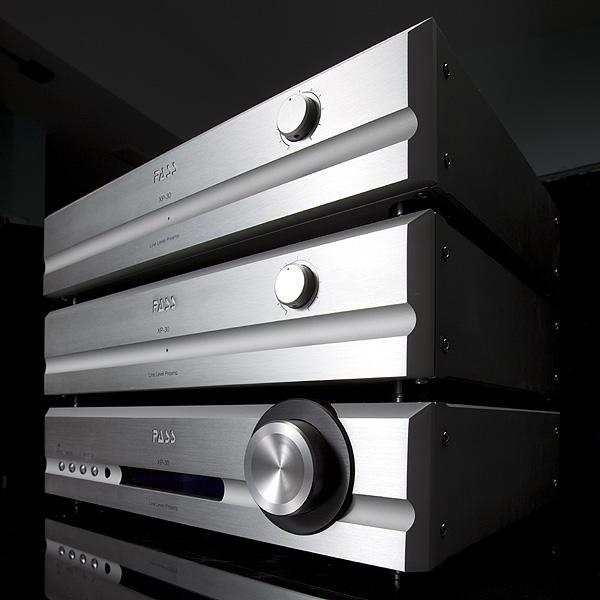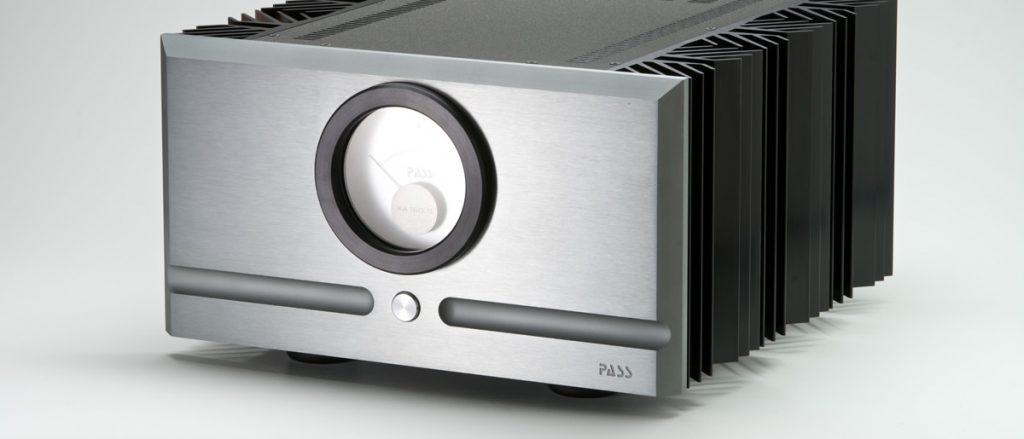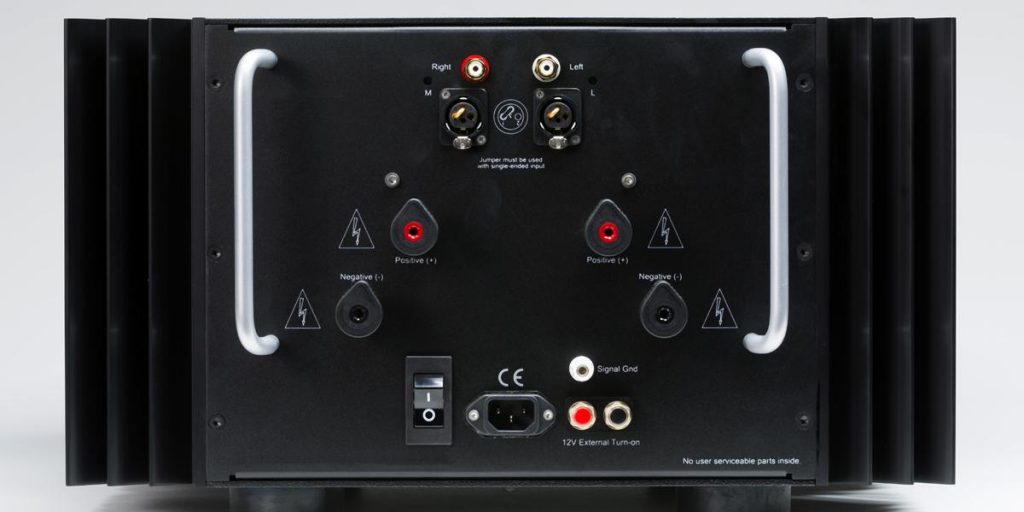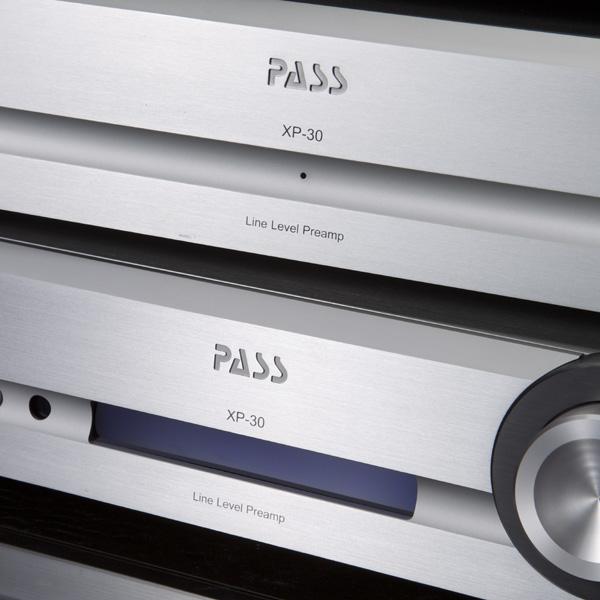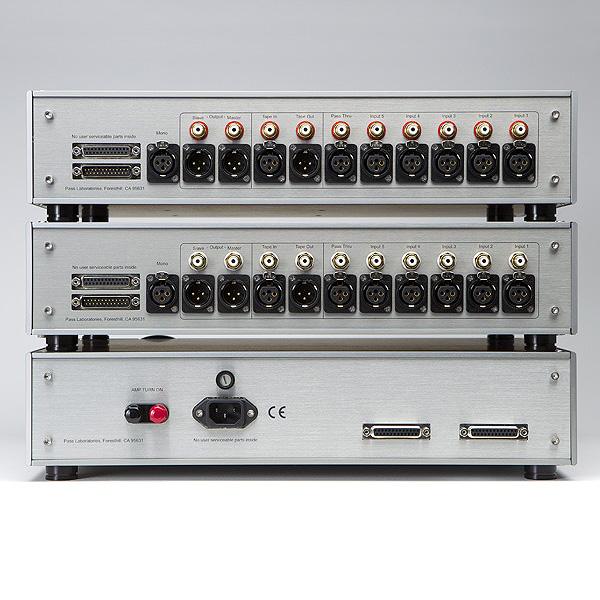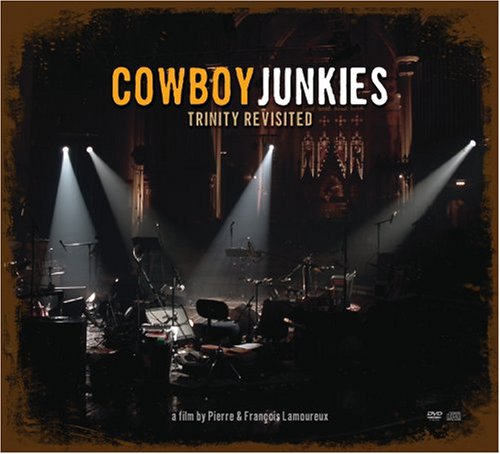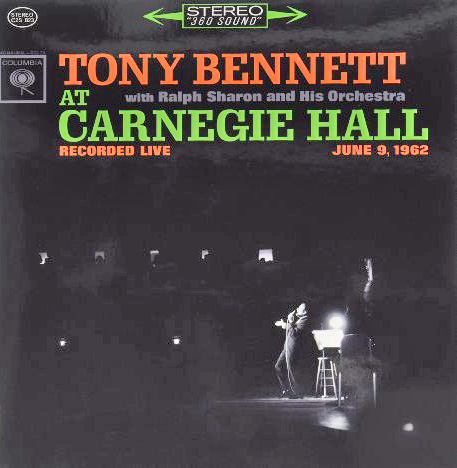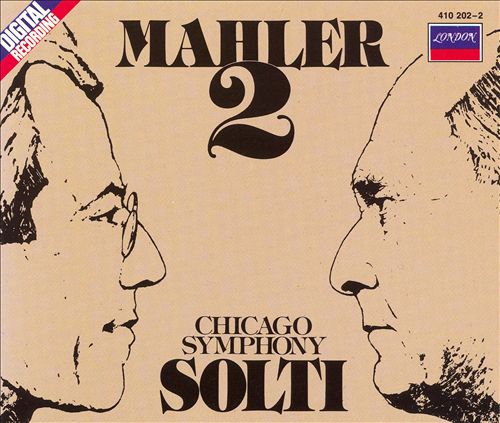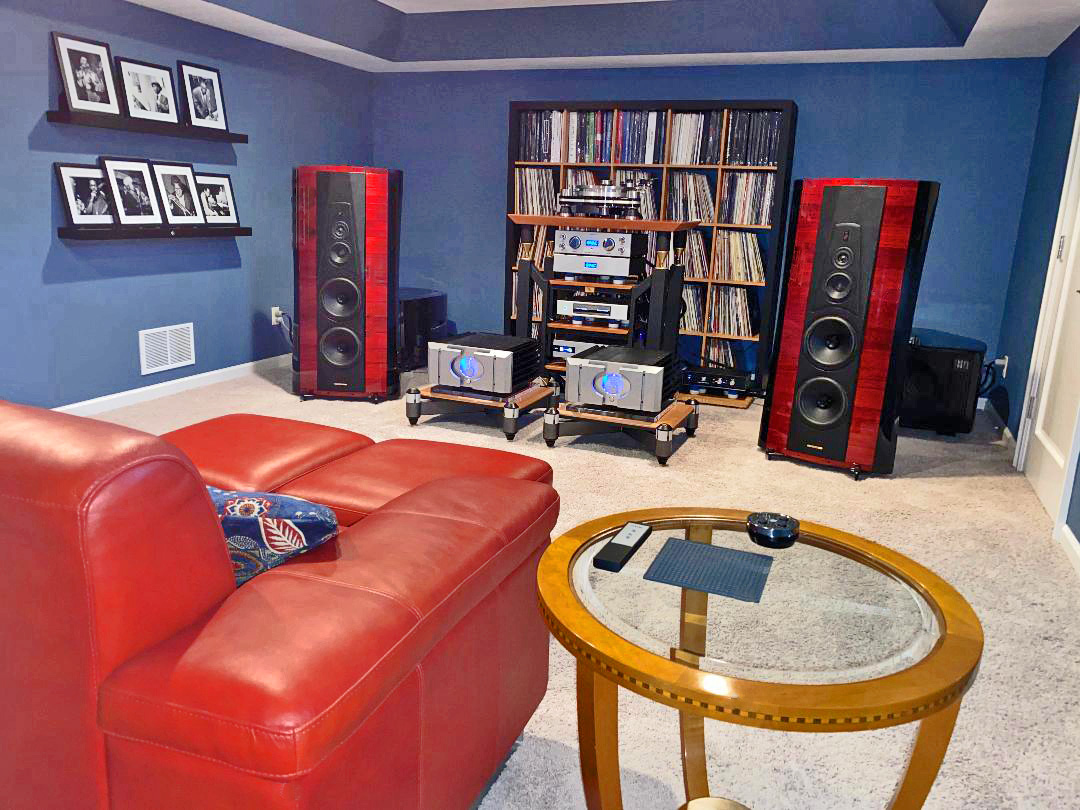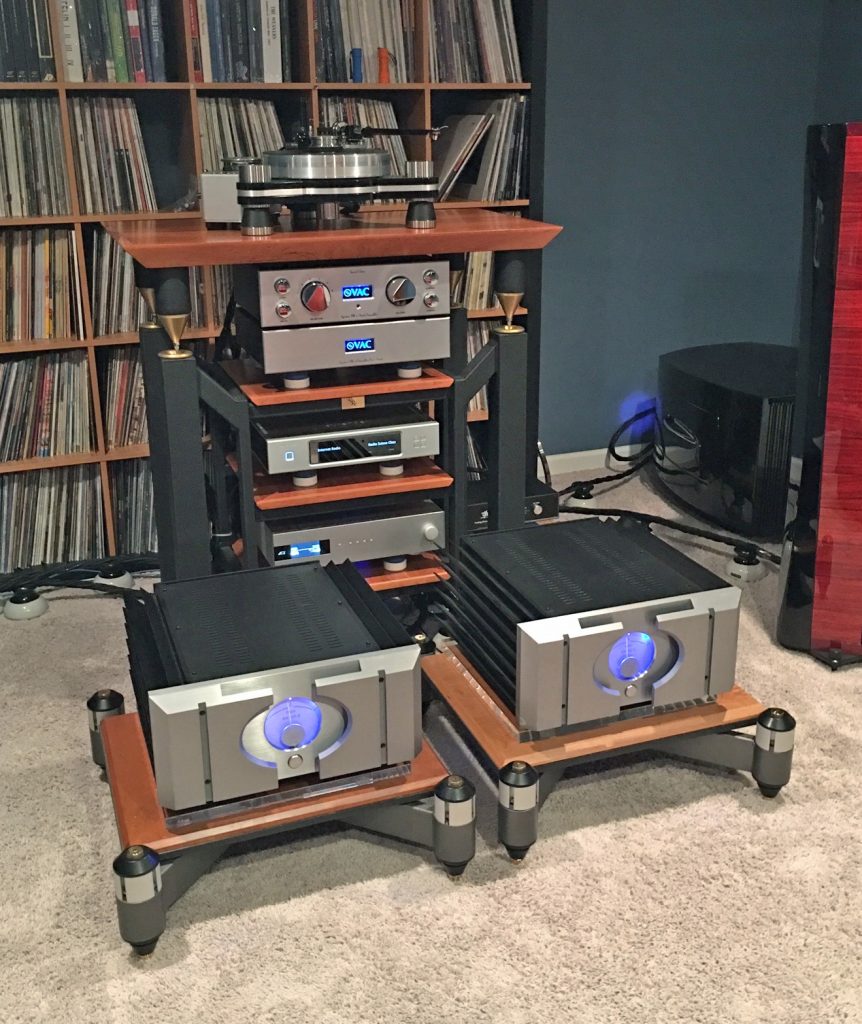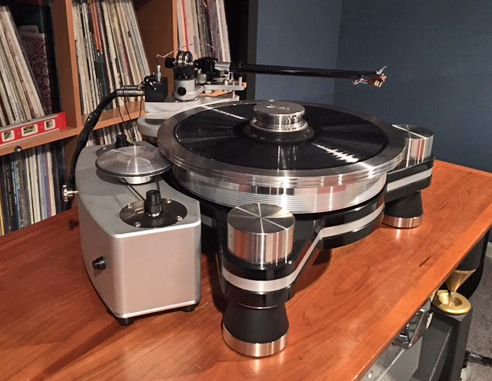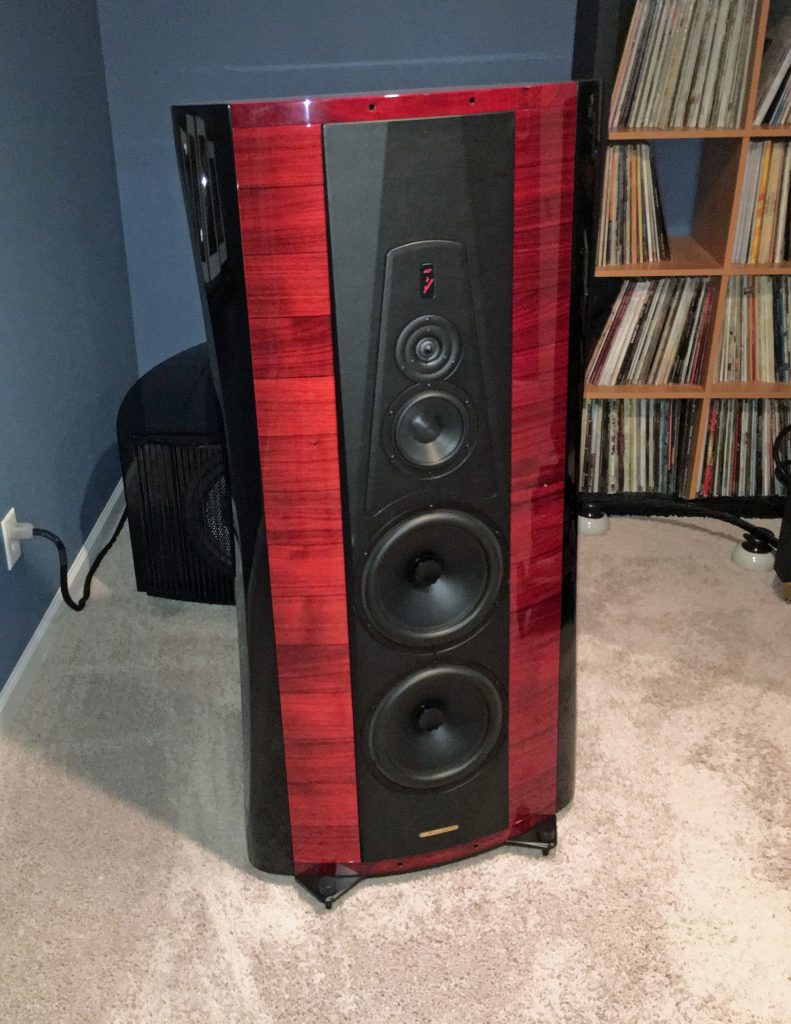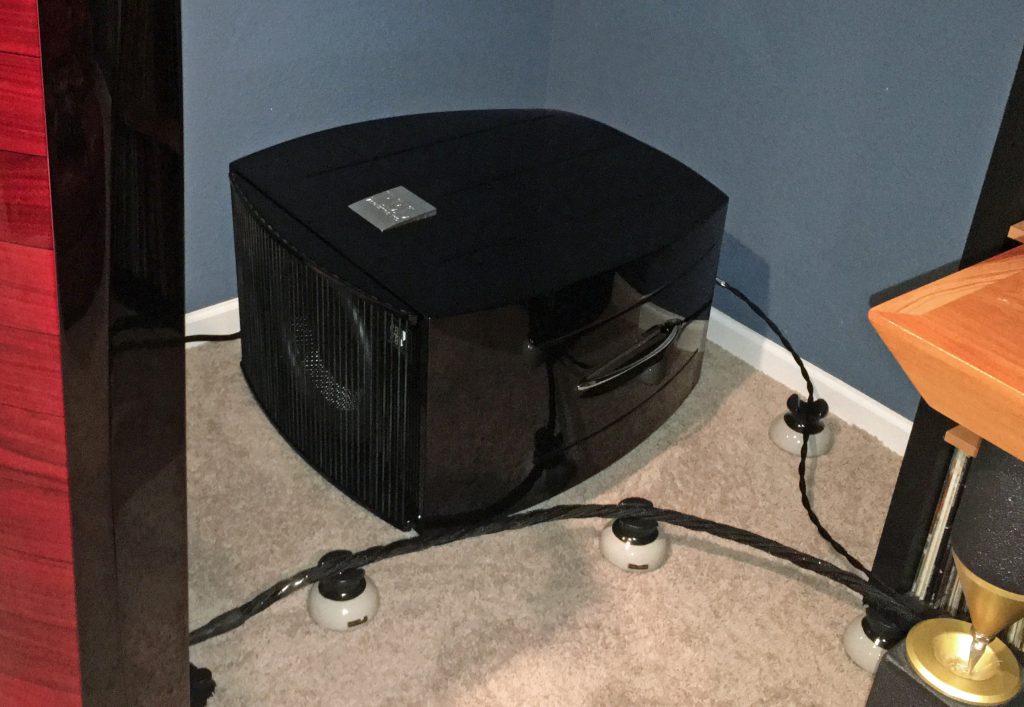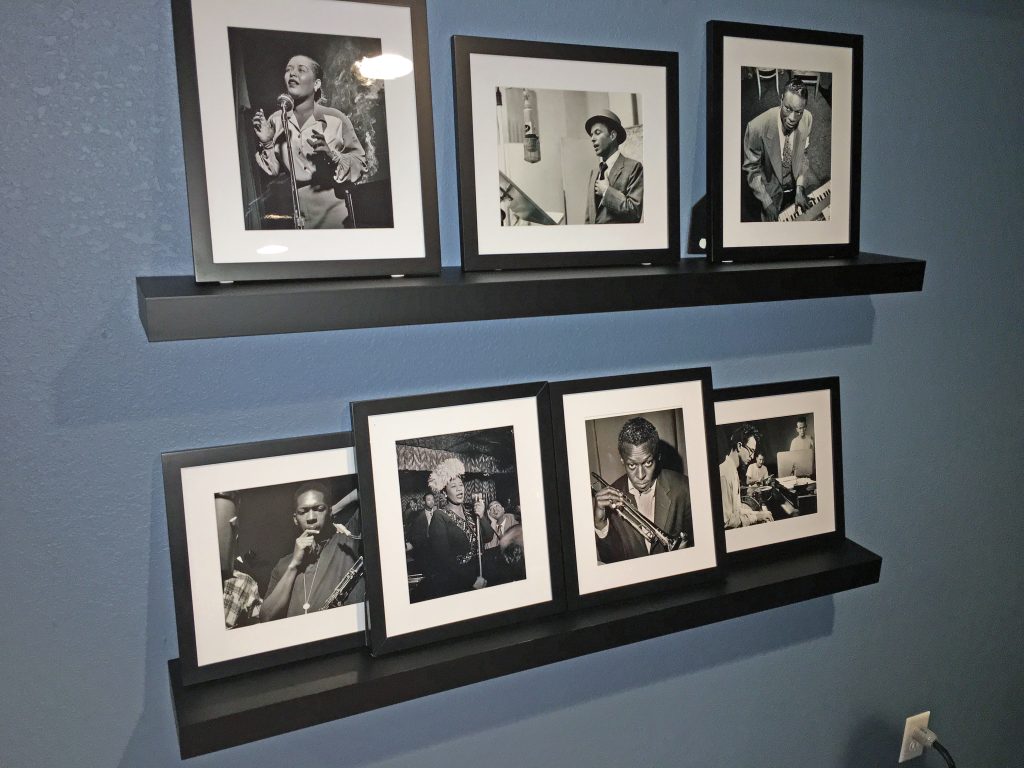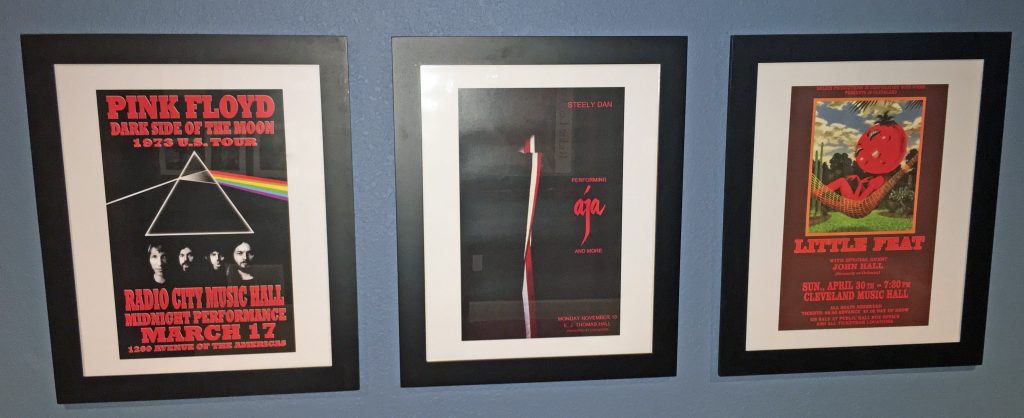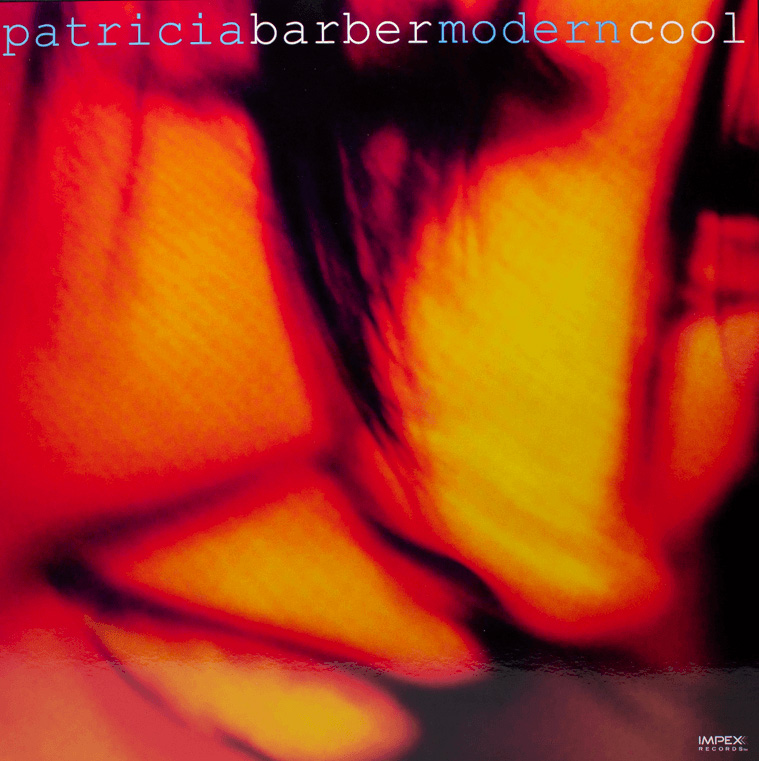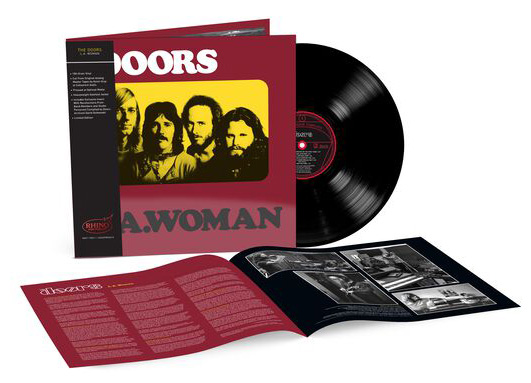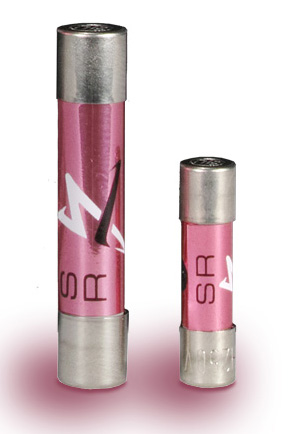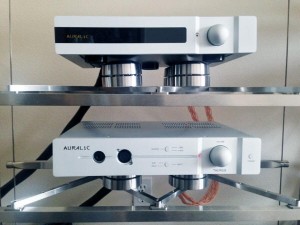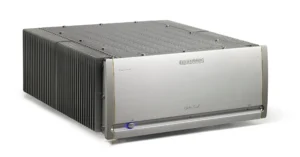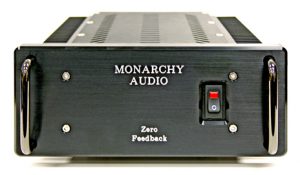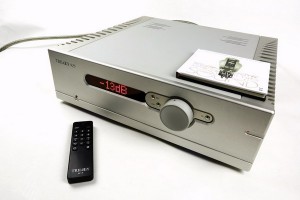"When you sit with a nice girl for two hours, it seems like two minutes. When you sit on a hot stove for two minutes, it seems like two hours. That's relativity." - Albert Einstein
I have auditioned, reviewed, and owned several products from Pass Labs over the years and this quote from Mr. Einstein strikes a definite cord relative to other experiences. Needless to say, I am frustrated more and more often these days with many of the new components from other manufacturers that come through the front door for review.
The word "relative" is important. These encounters can be exasperating even for those designs that check off all the audiophile boxes. It can sometimes be hard to put my finger on the issue, but the overall feeling is very clear as stated above.
I frequently fail to connect emotionally or intellectually, yet I know that there is no reason to panic. There are plenty of other exceptional options out there that continue to delight. For one, I can always turn to the creativity and innovation of Nelson Pass to bring me back to my senses and my love of music. This review is just another example of his genius and that of the entire Pass Labs team.
Allow me to pivot to some backstory that helped to drive this review forward. For those readers who have followed my series on integrated amplifiers, you know that I am a big believer in the whole concept—fewer boxes, fewer cables, fewer resonance control devices and one vision for sound and voicing from one designer. Savings can be used elsewhere for additional upgrades.
Integrated solutions from Pass Labs, D'Agostino, Vitus, Simaudio, BMC, and Devialet are just a few of my recent adventures. Next up is the AAVIK U-300 which is a Class D design that has received much praise at the recent audio shows. I may also have a sneak peak at the new hybrid Class A/D Devialet Expert Pro 1000 later in the year.
Of course, I continue to receive many passionate opinions on the advantages of separate components from many readers. There have been several requests for a comparison with specific combinations of solid state amplifiers along with various preamps—solid-state, tube, and even digital. The new lineup of Pass Labs Point 8 amplifiers are high on that list.
These requests have jogged my memory and brought me back to some of my favorite systems from the past that continue to haunt me since they no longer have residence in my listening room. One such all time favorite center piece was the Pass Labs X350.5 stereo amplifier which I owned for three years.
For me, those were the days that solid state preamplifiers never seemed to satisfy and tube preamplifiers brought the magic and strengths of both tubes and solid-state when combined with the X350.5. It was only in recent years that I finally gave in and discovered that one of my personal audiophile axioms no longer applied.
Until the latest generation of solid state preamps arrived, my golden rule was always that tubes had to be somewhere in the system for the most satisfying sound. Finally, solid-state preamplifiers could compete with the very best tube preamplifiers. Now it was more a matter of taste than design ideology.
BTW, the X350.5 mated well with almost anything. This was one of its greatest strengths. Excellent flexibility for impedance and voltage compatibility. At the time, my favorites were the Joule Electra LA-150, Hovland 200P, and Audio Research SP-14 tube preamplifiers. Each provided a different icing on the cake, but the results with each were superb.
With all of this in mind, I thought that a review of the new Pass Labs X350.8 stereo amplifier would be an interesting audition—especially if evaluated with a variety of preamps. We might learn something about the Point 5 verses Point 8 designs and also hit on a few data points in the integrated versus separates discussion.
Timing is everything and I was given the opportunity to review the Pass Labs X350.8 amplifier, the solid state Pass Labs XP-30 preamp and also the tube based Audio Research Reference 6 preamp. Lastly, I spent some time using the analog preamp outputs of the digital hybrid Class A/D Devialet 800 integrated amplifier. Fun stuff and very enlightening so let's proceed.
Review System
- Magico Q7 Speakers
- Pass Labs X350.8 Stereo Amplifier
- Pass Labs XP-30 Preamplifier
- Audio Research Reference 6 Preamplifier
- Devialet 800 Integrated Amplifier
- REL Gibraltar G-2 Subwoofers
- Playback Designs MPS-5 CD/SACD/DAC
- Aurender N-10 Music Server
- Synergistic Research Element CTS Power Cords, Interconnects, Speaker Cables and REL Subwoofer Neutrik Cables
- Synergistic Research Element CTS AES/EBU Digital Cable
- Synergistic Research PowerCell 10 UEF and FEQ - PowerCell Equalizer
- Rix Rax Hoodoo Component Rack
- Magico QPod Footers
Caveat Emptor
System synergy and personal taste are critical when evaluating high-end audio products. This review is based on my subjective requirements, my subjective ears, my specific system and my specific listening room. This combination is only one data point of many that exist out there for these components. Please consider my comments and analysis appropriately.
X350.8 Stereo Amplifier - Design
The X350.8 ($14,200) is a superb example of the Pass Labs commitment to trickle down product development—in this case what was learned from the flagship Xs series. There are several hardware enhancements over the X350.5 with this in mind. Like the X350.5, the X350.8 is still a fully balanced Class A/B design that utilizes the patented Supersymmetry circuit originally developed in the early 1990s.
This circuit has now been enhanced with the more exotic and powerful NOS (new old stock) Toshiba JFETs. Though manufactured discontinued, Pass Labs has managed to purchase enough for all future manufacturing and support needs.
Other improvements include much larger toroidal transformers and power supplies, more storage capacitance, more precise regulated voltages and and larger heat sinks. A chassis ground terminal is also included which came in mighty handy for the grounding needs of my two REL subwoofer high level Neutrik cable connections.
Aesthetic changes include a new faceplate, current meter, transport handles and Furutech binding posts. The later provides torque limiting tear drop adjustment knobs with much improved ergonomics and stability. As stated in my earlier reviews, the industrial design of the Point 8 series casework took some time to grow on me, but now I greatly prefer it over the Point 5 series. Thanks again to Desmond Harrington for these clean lines and who continues to multi-task well beyond his CEO skill set.
The X350.8 is rated at 350 watts into 8 ohms and doubles into 700 watts at 4 ohms. It leaves class A at 18 peak watts. Distortion is rated at 1% at 1 KHz. Dampening factor is rated at 150. Maximum volt output and maximum amp output is rated at 104 and 35 respectively. Overall dimensions are 19 inches wide, 21.5 inches deep, and 11 inches high. Shipping weight is 145 pounds. Thanks to my good friend and neighbor Brad who helped me move the X350.8 into my basement listening room. Yep, he is still standing. Me—not so much. Be careful with this beast!
X350.8 Stereo Amplifier - Sound
As mentioned earlier, one of the most attractive things about the X350.5 was that it could be used with great success in conjunction with a wide range of preamps. For this review, I had only three data points with the Pass Labs XP-30, Audio Research Reference 6, and the Devialet 800, but all three were wonderful and engaging combinations with the X350.8. See my comments below for the sound of the XP-30 and additional thoughts on preamp synergy.
Consistent will all three partners, the X350.8 provided tremendous depth and detail in the lower octaves. The Magico Q7 speakers can be a difficult load, but the X350.8 was barely challenged. I have stated in prior reviews that the Pass Labs Xs 300 monoblock amplifiers ($85,000) and Devialet 800 integrated amplifier ($30,000) have set my bench marks for bass performance when driving the Q7 speakers.
You would be hard pressed to hear much less with the X350.8. This occurred only with the most demanding recordings and with so much focus and concentration during your listening sessions that you would probably loose all insight into the music itself. Pipe organ aficionados and electronic dance music lovers will not flinch. The X350.8 is that good.
Now, I no longer have an X350.5 in house for a direct comparison, but my memory is pretty good after living with it for three years. I found the X350.8 to have a tighter and possibly more accurate bass performance. Slightly less rounded and warm—but more slam and impact. The overall effect was definitely a more physical and dynamic step closer to the real thing.
The same goes for the mids. The Pass Labs reputation for midrange performance still stands strong. Sweet and yet highly resolving (a nice combination but difficult to achieve), the X350.8 yields an addictively lush and natural performance that can compete with the very best tube amplifiers. The X350.5 provides slightly more bloom and can put a spotlight on some vocals which can also be very appealing. Only your ears and personal taste can determine which might be closer to your ideal.
Via the X350.8, highs have a rich sonic texture and reach further back into the inner density and layers of the most difficult instruments. Strings are particularly well fleshed out with less harshness and edge when compared to many solid state amplifiers. Extension was most impressive with plenty of jump factor and transient speed. Compared to the X350.5, I found the higher frequencies of the X350.8 to be slightly more refined with a moderate but noticeable improvement in purity and balance.
XP-30 Preamplifier - Design
The XP-30 ($16,500) is a three chassis fully balanced design that includes one control/power supply unit and two analog gain units with each gain unit containing the analog circuits of a single channel. By adding additional gain units, you can use the control unit to manage up to six channels.
The control unit contains a pair of Plitron transformers in dual mono topologies, EMI filtering, large capacitance reservoirs, and a sophisticated level of isolation to insulate it from the the analog gain units—a key element of the three chassis strategy to limit noise and distortion.
On the front panel, there is a nicely sized blue fluorescent display and control buttons for Inputs, Mute and Mode (display) along with a silky smooth Volume knob. A pair of DIN-25 multi-pin connectors on the rear of the control unit supplies power to each of the gain units. Six foot umbilical cables are provided.
Each gain unit individually provides Master and Slave outputs. Master and Slave outputs are adjustable by a knob on each gain unit front panel. This affords additional flexibility to bi-amp and tweak/match the output levels of multiple amps. I have often wanted to bi-amp my Magico Q7 speakers but the options were complicated. This is a very clean solution without compromise.
Each gain chassis has six analog inputs with duplicated options for XLR or RCA. Input 6 can be used either as a conventional input or as a pass through for home theater bypass. There are also Tape Loop inputs and outputs along with other very sophisticated options for using the Mono jacks in each gain chassis. Please see the Pass Labs website and/or the link to the user manual for more information on these options.
The volume control has 99 steps with a gain range from -90dB to +10dB. This just might be the most accurate and flexible volume control that I have ever used. Never did I get caught between one gain setting and another to meet my perfect volume level for a specific track. Input impedance is rated at 42K ohms balanced. Output impedance is rated at 120 ohms balanced and 120 ohms single-ended—easy matches for most amplifiers.
The standard Pass Labs remote is included with all the basic functions you could want—tastefully designed with an excellent layout and substantial weight and feel. Thankfully, only one power cord is required and that is connected to the control unit. The XP-30 is designed to be on all the time and has no on/off button. Shipping weight is 75lbs. Dimensions for each chassis are 17 inches wide, 12 inches deep, and 4 inches high.
XP-30 Preamplifier - Sound
It is well understood that it's a collaborative team effort for all the Pass Labs product designs, but in recent years, Nelson Pass has taken the lead on the amplifiers and Wayne Colburn on the preamplifiers. Wayne has gained much industry notoriety and reverence for many of his designs. Tough to do in the shadow of Nelson Pass, but well deserved.
Wayne clearly hit one out of the ballpark with the new Xs Preamplifier. Arguably the finest solid state or tube preamp that I have personally heard in my system or at any show. Also turns out that Wayne grew up in a small rural town here in Wisconsin—just a few minutes from my home. Small world. Great guy! Much to admire and respect well beyond his creative skills.
As one point of comparison, the XP-30 gives up little to the Xs. Yes, the Xs can be almost overwhelming with its combination of speed, detail and rich harmonics, but prior to the Xs strutting it stuff in my listening room, I would have confidently proclaimed the XP-30 as the finest solid state preamp out there. This is quite a statement and reflection on both products.
For me, the key differentiator for the XP-30 against the rest of the competition is the sense of ease, purity and proper weight across all frequencies. There is something quite organic and seductive about what this preamp can contribute to the system. Yes, it leans "slightly" and I do mean just slightly right of neutral but it is all good in my book. There is never too much of a good thing.
Music sounds like music—easy to make that ever evasive emotional connection. You get the detail and speed but never the sterile in your face waves of information like many solid state preamps. World class bass, mids and highs from any perspective or variable. It's all there and more.
While this was all going on with the XP-30, Jonathan Spelt over at Ultra Fidelis Audio in Wauwatosa Wisconsin made me an offer that I just could not refuse. He had a fully burned in Audio Research Reference 6 preamp ($14,000) that I could audition with the X350.8. The Reference 6 has been receiving rave reviews on the Internet and would make for an interesting comparison to the solid-state XP-30. I jumped on that offer—it turned out to be quite an enlightening experience.
BTW, I have been leaning on Jonathon more and more lately for his advice on system compatibility and specific component performance. His experience and opinions have been very beneficial. His help has saved a bunch of wasted time and energy. System setup and digital front ends are just two of his specialties amongst many. If located in the Midwest, I would definitely call Jonathon for his advice and opinions. My apologies for the blatant bromance and luv, but our best dealers are still the foundation of the industry.
Comparing the XP-30 to the Reference 6 is a tough one. Clearly two of the finest designs in the marketplace in this price range. Both are fantastic matches with the X350.8. Again, it's a matter of taste, but my bet is that both will have you checking your bank account for that slush fund tucked away long ago. I hope to publish a full report on the Reference 6 in the next few months, so please be patient and check it out. It will be well worth your time and consideration.
Back to my unabashed love fest for both products. I hear additional extension and speed at both ends of the XP-30, but not quite the bloom and immediacy unleashed in the mids and highs of the Reference 6. There is also a small but discernable level of additional transparency from top to bottom that the XP-30 can also offer. Again, highly articulate and resolving but never analytical and in your face. Awe inspiring stuff!
On the other hand, the Reference 6 provides the most impressive bass performance of any tube amp that I have yet auditioned. Plenty of solid-state like punch and authority without that typical tube thickness and overhang. The Reference 6 explodes with an incredible amount of dynamic energy and lifelike presence in the mids and highs that will quickly grab your attention and your pleasure. Wowser again!
Bottom line... the extension, transparency, and palpability of the XP-30 make it a must audition. The seductive mids/highs and muscular bass performance of the Reference 6 should also put it right there at the top of the list. I wish you luck on this one. Much applause to both Pass Labs and Audio Research for giving us such wonderful options.
Lastly, I spent some time comparing the XP-30 and Reference 6 to the preamp section and analog outputs of the digital hybrid Devialet 800 integrated amplifier. This was an interesting juxtaposition. I thought the Devialet was a notch better on transparency and dynamic contrast—something I would not have guessed beforehand as there was not much left to give on these variables. The extraordinary Total Harmonic Distortion (THD) rating of .001% and the 130dB signal to noise ratio of the Devialet was hard to ignore. Yes, sound is everything, but these specs are important and the results are noteworthy.
A few things stood out. The soundstage reached further back into the far corners of the recording venue. Every last bit of air around each instrument and vocal stood out like seldom before. Again, bass was tight, tight, and more tight which provided depth charge like results. The Devialet was neutral to maybe just slightly left of neutral in overall presentation which was still quite pleasing when combined with the X350.8. However, for now, I preferred the overall tone and balance of the XP-30 and Reference 6 with the X350.8.
Lets also keep the Devialet in the right perspective. Most digital designs can be tuned and tweaked based on the algorithms inherent to each software release. There is a tremendous potential here for future enhancements and flexibility. Again, different strokes for different folks but lets not ignore what might be out there in the near future from a digital perspective.
Integrated vs. Separates
I should have probably spent more time on this subject as advertised earlier. Readers love the shoot outs, but the permutations are endless. I have some thoughts about how to organize and compare some of my review notes over the last few years to make for some reasonable logic and back up. Be patient. I will try to make it happen.
With that in mind, not much to say here for now. Please remember that most of this is still all subjective. Many argue that separates have a distinct advantage when it comes to circuit and hardware design that can provide clear discrete gains in terms of noise, separation and power improvements. It seems logical that a larger footprint and separate chassis for each function and channel will give you that in spades.
For me, it's all about the execution and the specific needs to drive your system. With proper execution you can still get it all with integrated solutions and with very few caveats. Pass Labs, Vitus, and D'Agostino have proven this point over and again for my ears. Ouch! I can hear the hate mail already flowing.
I will admit however, that separates can afford you that additional flexibility and customization that might give you the edge to address your personal listening needs. Combining different brands and different solid-state, tube and digital components is an important consideration. Let's not forget the evolution of specific functions that can be updated without replacing the entire system. For example, I would definitely keep my options open as digital front ends continue to evolve.
But, as they say in my old Chicago neighborhood, "I'm not sayin, I'm just sayin." Please don't shoot the messenger. It's just an opinion. Again, I'll get back to you on this one.
Wire
I must mention one more thing about this and other recent reviews. In the last year, I have had the opportunity to listen to various new wire products in my system with a variety of DACs, preamplifiers, amplifiers, and integrated amplifiers. The Magico Q7 speakers have been the only constant variable. Auditions are still in progress, but I have not been very inspired.
Whether it be the new and over achieving Synergistic Research Atmosphere cables or my trusty and reliable Synergistic Research Element CTS cables (which my wife insists on keeping around as an option for all future reviews), I have not heard anything yet that can compete in terms of performance and value. The tuning circuits have been especially effective and invaluable in my evaluations. This SR stuff sure seems to make everything sound at its best!
I also agree with my man Andy Wiederspahn and CEO Ted Denney over at Synergistic Research that having all loom of the same brand and model in the system can make a significant difference. As always, I will continue to seek out the ultimate, but I feel compelled to highlight one of my highlights over the last few years. Check it out! You will not be disappointed.
Music
A quick note on music references. My comments will focus on the XP-30 and X350.8 combination. As stated earlier, I plan on publishing a very in depth review of the Reference 6 at a later date. I may also have something new to say later in the year on the just released Devialet Expert Pro 1000.
Cowboy Junkies - Trinity Revisited
Most audiophiles are familiar with the original Trinity Sessions recorded in 1988. Simply staged with a single microphone inside the Church of Holy Trinity in Toronto Ontario, this release was considered a landmark album for both sound quality and performance. My out of print Classic Records' released on CD is tough to find but it reaches high and is surprisingly very close to the sound of the much admired original vinyl LP and the Classic Records vinyl reissue. Keep an eye out on eBay if you are digital only. Highly recommended.
Almost 20 years later in 2007, an anniversary recording was made in the same church with the same set and band members. In addition to Margo Timmins on vocals, Michael Timmins on guitar, Alan Anton on bass, and Peter Timmins on drums, we have Natalie Merchant, Ryan Adams, and Vic Chesnutt joining them on stage.
Most purists discount the newer recording, but I find it fascinating. Sound quality is still up there with the best and the addition of these voices really works to make it something very special and worth owning—especially if you are a big Cowboy Junkies fan. This original Zoe Records CD release also comes with an excellent DVD with both stereo and 5.1 surround sound. A fairly interesting documentary is also part of the set. Vinyl LP versions are available on the Diverse label but last I looked they were going for close to $200 each.
Yes, you can still hear the air conditioning rumbling in the background, but vocals and instruments take on a new vibrancy and color. Micro and macro dynamics have exceeded the original to bring you even closer to the event. My key interest here is track two, "Misguided Angel". Natalie joins Margo vocals and Alan Anton is at his very best on bass.
These two ladies have incredible voices but most digital recordings find them slightly bleached and with considerable sibilance when reproduced through a solid state system. The XP-30 and X350.8 are a revelation. Gone is the edge and grain. Now we have a rich yet delicate take on both vocalists. Inner detail and harmonics are to die for. Pin point imaging bounces back and forth to each at different locations on the stage. Gotta love the tube like purity and emotion.
Bass has tremendous depth and separation. Alan keeps it simple so you get plenty of heft and impact on each stroke without smear. You can clearly tell that he takes control of the rhythm section with Peter Timmins tagging along for the ride. Again, the imaging is impressive and you can sense the far corners and spatial cues of the venue—something that solid-state does not always do well. A great test passed with flying colors!
Tony Bennett – Tony Bennett at Carnegie Hall
This recent hybrid SACD from Analogue Productions was a real eye opener. I thought that the classic Carnegie Hall recordings for both Harry Belafonte and The Weavers could not be surpassed. I was wrong. This 1962 Columbia release hits all the buttons and is absolutely the one to have if you are just introducing yourself to Tony's music. Backed by the exquisite Ralph Sharon Orchestra, this set of 28 titles is an absolute sonic spectacular.
There is a nice range and variety to the selections. Standards like "I Left My Heart In San Francisco", "April in Paris", "One For My Baby" and "Blue Velvet" are mixed in with several show tunes and popular hits of the day. Tony Bennett proves once again that he can not be boxed in as just another great jazz singer. He swings with the big band but he can also quickly morph into his saloon solos with marvelous timing and astonishing emotion. Sinatra would be proud.
The XP-30 and X350.8 quickly raise the bar on the opening track "Lullaby of Broadway". You get the full band nicely layered across the soundstage with excellent height, width and depth along with superb pin point separation. It's hard to get the brassy blare and blatt of the horns correct, but this dynamic duo gets it right as Ralph Sharon hurls them up and down the score like a killer roller coaster ride.
The clincher that will make you jump out of your seat is what happens when the bongos kick in. Locked and loaded and magically floating on what seems like several pallets of air, you get all the pop and plunk of the real thing. You can physically feel the skin resonate and expand as the musician drives forward.
I was also impressed with how the vocals were delivered. Tony was obviously much younger at the time, and his range was quite astonishing which without doubt challenged the microphone set-up and recording process. With some amps and preamps (both tube and solid-state), his voice on this album can range from ruthlessly clinical to falsely warm and almost syrupy.
The XP-30 and X350.8 find a very happy medium that I would not really consider a compromise. The results will have you "Bewitched, Bothered and Bewildered" (sorry for the pun on one of Tony's classics). For example, on track nine, "Put On A Happy Face", you get all the texture and vivid reality of his voice at the time without the typical musical chaos of inferior electronics. Whimsical and daring along with all that emotion and charm that clearly comes through. All in all, another impressive display of sound reproduction.
Georg Solti & The Chicago Symphony Orchestra - Mahler: Symphony No. 2 Resurrection
This recording on CD was my first exposure to Mahler and it still brings back the goose bumps whenever I play it. Released in 1984 on the London label, and not really an audiophile favorite, the performance is simply amazing and will draw you in regardless of the sound which ranges from good to excellent depending on the movement.
The Second Symphony was one of Mahler's most popular works during his lifetime. A key theme throughout is his lifelong infatuation with the afterlife and the resurrection. This composition is an absolutely brilliant masterpiece with an alluring rich tapestry of melody, harmony and orchestration.
I hate to use that term "emotional impact" again, but this music provokes that feeling like few other pieces. Sadness, joy, despair, and triumph rise and fall throughout. Sorry for all the drama, but the very best classical music can touch your soul—especially when your system has the ability to really make that connection.
Solti and the infamous brass section of the CSO make a mark here that has few rivals and continues to be the benchmark for many. The pace and raw power of the first two movements will take your breath away. Strings, woodwinds and brass intertwine across the stage and build to several huge and physically startling climaxes.
The XP-30, X350.8, and Q7s have that rare ability to dazzle you with the extreme dynamics that only the very best components can deliver. All of this while building to a foundation of enormous weight and visceral impact. Only a world class orchestra seated in a world class venue can liberate this kind of sound. I have heard it and felt it at Orchestra Hall in Chicago. I can now hear and feel it in my listening room. Thank you Pass Labs!
At about 25 minutes into the fifth movement is my other go to moment of ecstasy. At this point, the huge chorus really takes off and soars to the heavens. The entire listening room is overwhelmed with a sweeping explosive force that will have your head spinning. This takes plenty of unrestrained authority and never ending current. Again, the XP-30, X350.8, and Q7s demonstrate what few can even imagine.
Final Thoughts
Pass Labs has two more winners to add to their never ending stable of champions. Fit and finish for both are superb. The industrial design and clean lines will easily pass the wife acceptance test. These products have the look and feel of the very best and they deliver on that promise.
The X350.8 stereo amplifier has the ability to really anchor and stabilize your system. Solid-state, tubes, digital—any preamp with reasonable impedance specifications will match well and give you the flexibility to dial in for your specific listening needs. It has power to spare and dynamics that just might finally end your never ending pilgrimage for ultimate performance.
The XP-30 preamplifier has a unique design with a standalone control unit and dedicated analog gain units for each channel. There is plenty of logic and evidence that this design really delivers. Super quiet, super transparent and a sense of tone and purity to die for. The provided options for switching, inputs/outputs, and gain should satisfy even the most discerning audiophiles and sophisticated systems
Most important is the overall execution and end result. I have used the terms "emotional connection" and "emotional impact" over and over again in this review. This is the key for what I call the "frustrated audiophile". There is an abundance of impressive stuff out there, but without the emotion the journey will never end. Take the plunge or at least an extensive audition. Well worth the time and effort when seeking out the dream team for your listening room.
Pass Laboratories X350.8 Stereo Amplifier
Retail $14,200
Pass Labs XP-30 Preamplifier
Retail $16,500
Pass Laboratories
13395 New Airport Road
Suite G
Auburn, CA 95602
530.878.5350




